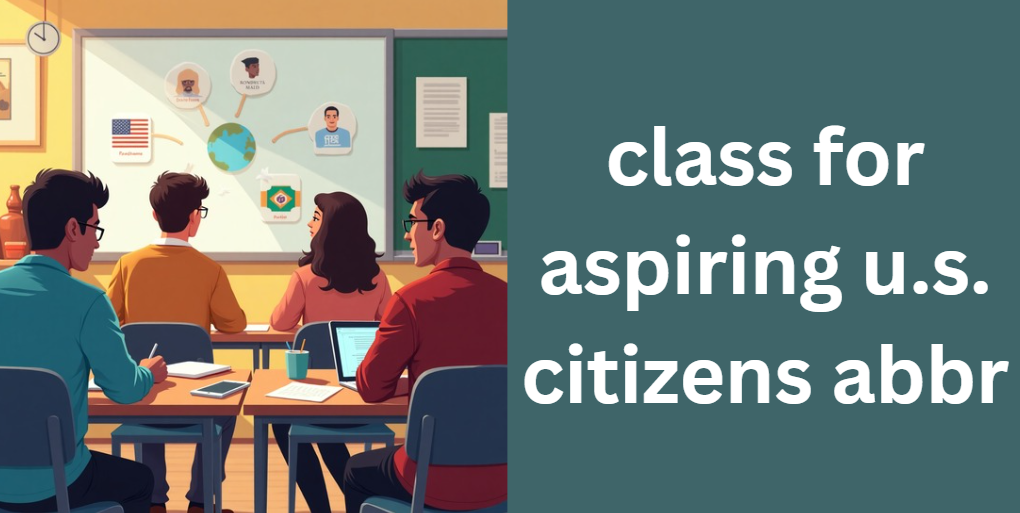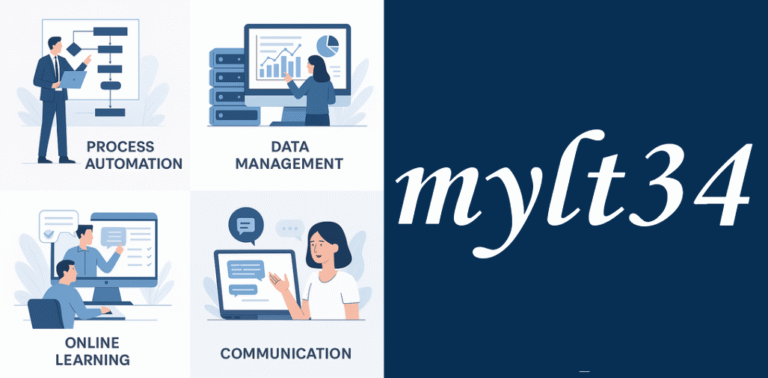The Ultimate Guide to class for aspiring u.s. citizens abbr
Immigrating to the United States and becoming a citizen is a life-changing journey. A key step on this path is gaining proficiency in English through ESL courses. When you come across the term class for aspiring u.s. citizens abbr in various contexts—especially in crossword puzzles—it refers to ESL, a course designed to improve language skills essential for U.S. citizenship.
This guide explains why ESL classes are critical, outlines the benefits they offer, and provides actionable advice on how to enroll in quality programs. Whether you are an immigrant preparing for the naturalization test or an educator helping others navigate this process, this article is your ultimate resource.
Background and Significance
The history of ESL education in the United States is intertwined with the nation’s evolving identity as a melting pot of cultures. In the 1960s, as immigration increased, the need for structured English education became evident. ESL programs were established to help non-native speakers overcome language barriers and integrate into American society.
Over the decades, these classes have grown in scope and sophistication, offering not just language instruction but also insights into U.S. culture, government, and civic responsibilities.
This educational support plays a crucial role in the citizenship process. English proficiency is one of the fundamental requirements for naturalization, as applicants must demonstrate the ability to read, write, and speak basic English. Moreover, ESL classes provide a foundation for understanding U.S. history and civics, further preparing individuals for the citizenship test and interview.
Below is a table that highlights key milestones in ESL education history:
| Milestone | Year | Significance |
|---|---|---|
| Establishment of early ESL programs | 1960s | Initiated to aid immigrant integration |
| Expansion during Civil Rights era | 1970s | Increased access to education for non-native speakers |
| Modern digital ESL curriculum | 2000s | Integration of technology and multicultural teaching methods |
Understanding the Abbreviation ESL
The abbreviation ESL stands for English as a Second Language, and it is commonly associated with the term class for aspiring u.s. citizens abbr. For many immigrants, ESL classes are the first formal step toward achieving language proficiency required for U.S. citizenship. These courses are not merely about learning a new language; they provide an immersive experience that includes cultural education and practical communication skills.
In an ESL class, you encounter a variety of learning methods designed to cater to different learning styles. Some programs emphasize interactive lessons and conversation practice, while others offer structured grammar and vocabulary modules. The goal is to build confidence and fluency in everyday situations, preparing learners not only for the naturalization process but also for success in their professional and personal lives.
A concise list of the benefits of ESL courses includes:
- Interactive Lessons: Engage in real-life conversation and scenario-based learning.
- Cultural Immersion: Gain insights into American customs and civic life.
- Flexible Learning Options: Choose from in-person, online, or hybrid classes tailored to your schedule.
The Role of ESL in the U.S. Citizenship Process
Achieving U.S. citizenship involves meeting several criteria, one of the most critical being language proficiency. ESL classes provide the necessary training in reading, writing, and speaking English, which are evaluated during the naturalization test and interview. These courses also help students build a better understanding of U.S. history, government, and civic responsibilities, which are integral parts of the citizenship exam.
In addition to language skills, ESL classes instill confidence in new immigrants. Being able to communicate effectively enables them to navigate social, educational, and professional environments more easily. This not only enhances their integration into American society but also empowers them to become active, informed citizens.
Here is a table illustrating the connection between ESL education and U.S. citizenship requirements:
| Citizenship Requirement | How ESL Supports It |
|---|---|
| Language Proficiency | Provides instruction in reading, writing, and speaking English |
| Civic Knowledge | Incorporates U.S. history and civics into the curriculum |
| Interview Preparation | Builds confidence for the naturalization interview |
Finding and Enrolling in Quality ESL Programs
For many aspiring citizens, finding a high-quality ESL program is the next important step. Programs are available through community colleges, adult education centers, and online platforms. When selecting a program, consider factors such as the reputation of the institution, the experience of instructors, class size, and the availability of supplemental resources like tutoring or conversation clubs.
If you are looking for a program, start by checking with local community centers or educational institutions recognized by USCIS. Many government websites also offer listings of approved ESL classes in your area. Moreover, online reviews and testimonials can provide valuable insight into the effectiveness of a particular program.
A sample checklist for choosing an ESL program might include:
- Verify the program’s accreditation and the credentials of the instructors.
- Consider the class schedule and learning format (in-person or online).
- Read reviews and gather recommendations from past students.
- Look for additional support services such as tutoring or language labs.
Advanced Resources for Aspiring Citizens
Beyond traditional ESL classes, a range of digital tools and supplementary materials are available to enhance your learning. Mobile apps like Duolingo, Babbel, and other language-learning platforms can provide daily practice and reinforce classroom learning. Additionally, many community organizations and libraries offer free workshops and conversation groups to help immigrants practice their English in a social setting.
By integrating these advanced resources, you can create a robust learning environment that not only prepares you for the citizenship test but also accelerates your overall language acquisition. Combining formal education with digital tools creates a well-rounded approach that supports both academic and practical learning.
Frequently Asked Questions (FAQs)
What innovative teaching methods are currently being used in modern ESL programs for citizenship?
Recent ESL programs for aspiring citizens incorporate blended learning models that combine interactive digital lessons, real-life role-playing, and immersive group activities. These approaches are designed to mimic real-world scenarios, helping learners rapidly build confidence in both conversational English and practical civic engagement. Teachers now integrate virtual reality and language apps into the curriculum, providing a dynamic environment that keeps students actively involved in the learning process.
How can participating in an intensive ESL course impact an immigrant’s readiness for the naturalization exam?
Intensive ESL courses are structured to rapidly enhance language proficiency in a short period of time. By concentrating on accelerated learning, students often experience noticeable improvements in vocabulary, grammar, and speaking skills, which directly translates into better performance on the naturalization exam. The immersive environment and regular practice sessions help bridge the gap between everyday communication and the specific language requirements of the citizenship test.
What are the key differences between intensive ESL programs and part-time classes for aspiring citizens?
Intensive programs typically offer a condensed schedule with more hours of instruction per week, allowing students to make significant progress quickly. In contrast, part-time classes provide a more flexible learning pace that might better suit individuals with work or family commitments. Each approach has its advantages: intensive courses can jumpstart language acquisition, while part-time classes offer the opportunity to steadily integrate learning into daily life over a longer period.
How do instructors evaluate progress in ESL classes aimed at preparing for U.S. citizenship?
Educators use a combination of formative and summative assessments to track improvement. This can include periodic language proficiency tests, performance-based activities, and practical exercises that simulate naturalization interviews. Feedback is given regularly, allowing students to understand their strengths and identify areas for improvement, ensuring that their learning trajectory is both measurable and aligned with citizenship requirements.
Are there any government or non-profit initiatives specifically designed to support ESL education for immigrants seeking citizenship?
Yes, several federal, state, and community programs are dedicated to enhancing ESL education for immigrants. Many non-profit organizations partner with local governments to offer free or low-cost ESL classes, and some initiatives are directly funded by government agencies to ensure that immigrants have the support they need during the naturalization process. These programs often extend beyond language instruction to include cultural orientation and civic education, creating a holistic approach to integration.
Conclusion
In summary, the class for aspiring u.s. citizens abbr is a term that encapsulates the vital role of ESL education in the journey toward U.S. citizenship. This guide has explored the historical context of ESL programs, detailed the benefits of acquiring English proficiency, and offered practical advice on selecting and supplementing your education.
By understanding and leveraging the resources available, aspiring citizens can build a solid foundation for success in the naturalization process. Embrace the opportunity to learn, grow, and become an informed, active member of society.
Read more
The Ultimate Guide to achilies heel swade spc
Deforest Kelley on QVC 1986: A Comprehensive Guide
Comprehensive Guide on eastern air devices
Comprehensive Guide to plugboxlinux fashion and interior design






